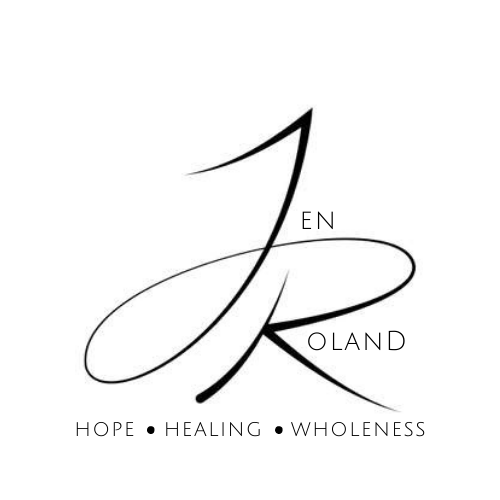Mindfulness has received a lot of hype in recent years, but what does it really mean? According to Jon Kabat-Zinn, former professor of medicine and the creator of the Stress Reduction Clinic at the University of Massachusetts Medical School, mindfulness is “paying attention in a particular way, on purpose, in the present moment, non-judgmentally.” It’s about learning to be in control of your thoughts instead of allowing your thoughts to control you.
When you’re going through a tough time or live with chronic pain (physical or emotional), practicing mindfulness is key to reducing stress and anxiety so we can improve our quality of life. We may not be able to change our circumstances, but we can change the way we think about and respond to them. There is tremendous power in our response!
It’s easy to focus on the pain, what we’ve lost, or our worries about the future, but none of those thoughts serve us well. In fact, they are harmful. (See the examples below.) Mindfulness enables us to observe these thoughts so we can replace them with those that are helpful. As we’ve learned in previous posts, our thoughts and beliefs impact our emotions and behaviors, which directly impact how our body responds. Intrusive thoughts contribute to pain and literally make us feel worse.

The practice of mindfulness is about noticing intrusive thoughts without being swept away by them. It’s developing the skill and ability to control how long we pay attention to what, and to shifting our thoughts to what is true, right, pure, and praiseworthy (Philippians 4:8).
Unpleasant physical sensations and negative thoughts—when we ruminate on them—cause additional suffering. This 5-minute video on DBT Distress Tolerance Skills: Difference Between Pain and Suffering explains it well. (Note that just because mindfulness has roots that reach back to Buddhism does not mean it’s a Buddhist practice. Mindfulness is about slowing down and cultivating an awareness of our thoughts so we can embody a calm, non-anxious presence. In the life of a Christian, this means bringing our thoughts back into alignment with God’s Word.)
As the video explains, a negative reaction to a difficult event, while human, can initiate a second negative reaction that causes unnecessary suffering. This starts a detrimental cycle that pulls us into a downward spiral of hopelessness, distress, depression, and despair. So, how can we change that?
Through acceptance. Accepting our current situation as what is true for right now isn’t about losing hope, resigning, or giving up, but rather possessing a willingness to see things for how they really are, at this particular moment in time, and discern what God wants us to learn from it. It’s a decision not to resist, fight against what is true, or try to fix what is outside our sphere of control. This 5-minute video, DBT Skills: Mindfulness and Radical Acceptance explains it well.
You might be wondering what DBT stands for and what it has to do with mindfulness. DBT, which stands for Dialectical Behavioral Therapy, is a practice to help us manage overwhelming emotions. To be in relationship with our Almighty God is to attune our emotions with His. God rejoices, He mourns, and He loves believers and non-believers alike, so much so that He gave us His begotten Son to die on the cross for our sins (John 3:16). God is pleased by our prayers, displeased by our complaints, and gets angry at sin and disobedience. All of these emotions are healthy.
God, however, does not want us to be anxious. He commands us repeatedly not to fear. He warns us against unhealthy jealousy, envy, shame, and pride, and He gives us a reason to always have hope. When we find ourselves anxious, fearful, jealous, or depressed, He doesn’t condemn us, but gently invites us back to what is most important—spending time with Him.
We search far and wide for meaning, answers, treatments, and solutions, when God calls us to seek Him. When we focus on Him, our anxiety fades. When we come to Him, He gives us rest.
In Matthew 11:28, Jesus says, “Come to me, all you who are weary and burdened, and I will give you rest.” Yet we struggle to sit still, quiet our minds, and silence our surroundings long enough to spend time in His presence. We keep running, reasoning, catastrophizing, and obsessing, while simultaneously wondering where God is.
Do you see the irony?
Sometimes, we can use a little help “bringing ourselves back to baseline” and focusing on what we know to be true, what we can control, and what God’s promises say. This is where the skill of radical acceptance comes into play. Radical acceptance is a DBT strategy that incorporates the practice of mindfulness to reduce psychological distress. (If you’re interested in exploring DBT in more depth, you can download a free workbook with exercises here.) As described on page 27-28 of the workbook, radical acceptance involves a shift in our attitude. Rather than becoming anxious, stressed, and blaming external factors for our pain, which makes us feel worse, we can learn to see the situation for how it is so we can take steps to change what we can control. Here are a few examples:

Radical acceptance helps us think more clearly, refocus on what we can control, and implement healthy coping strategies that eliminate unnecessary suffering. This simple practice also improves our stress level, sleep, nervous system regulation, and relationships. For additional strategies, including incorporating pleasurable activities into your day, self-soothing, and fostering a sense of safety, check out Chapter 1 of the DBT Skills Workbook or subscribe here to follow along as I dive deeper into these strategies in future posts.
Call to Action: Read Chapter 1 of the DBT Workbook and try an exercise or two. Then, leave a comment below letting me know what resonates! By implementing these skills, you’ll learn how to be in control of your thoughts and emotions, rather than allowing them to control you, which will positively impact your health, relationships, and quality of life.






One thought on “Mindfulness and Radical Acceptance – A Christian Perspective”
Hi! Is this where I sign up??
Thank you!
Dawn